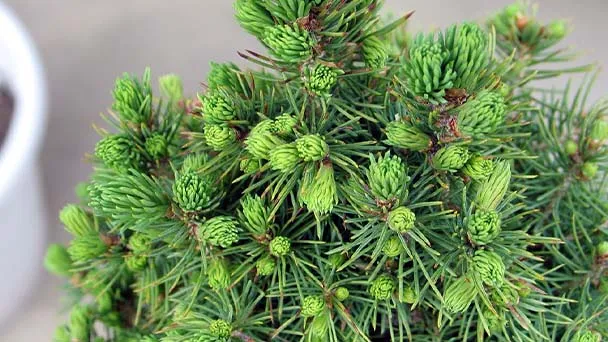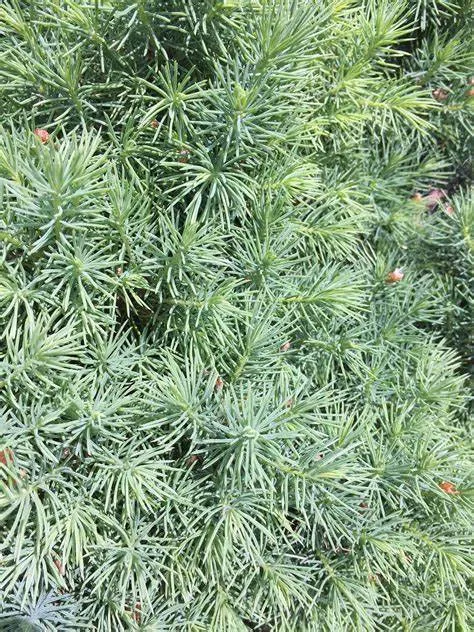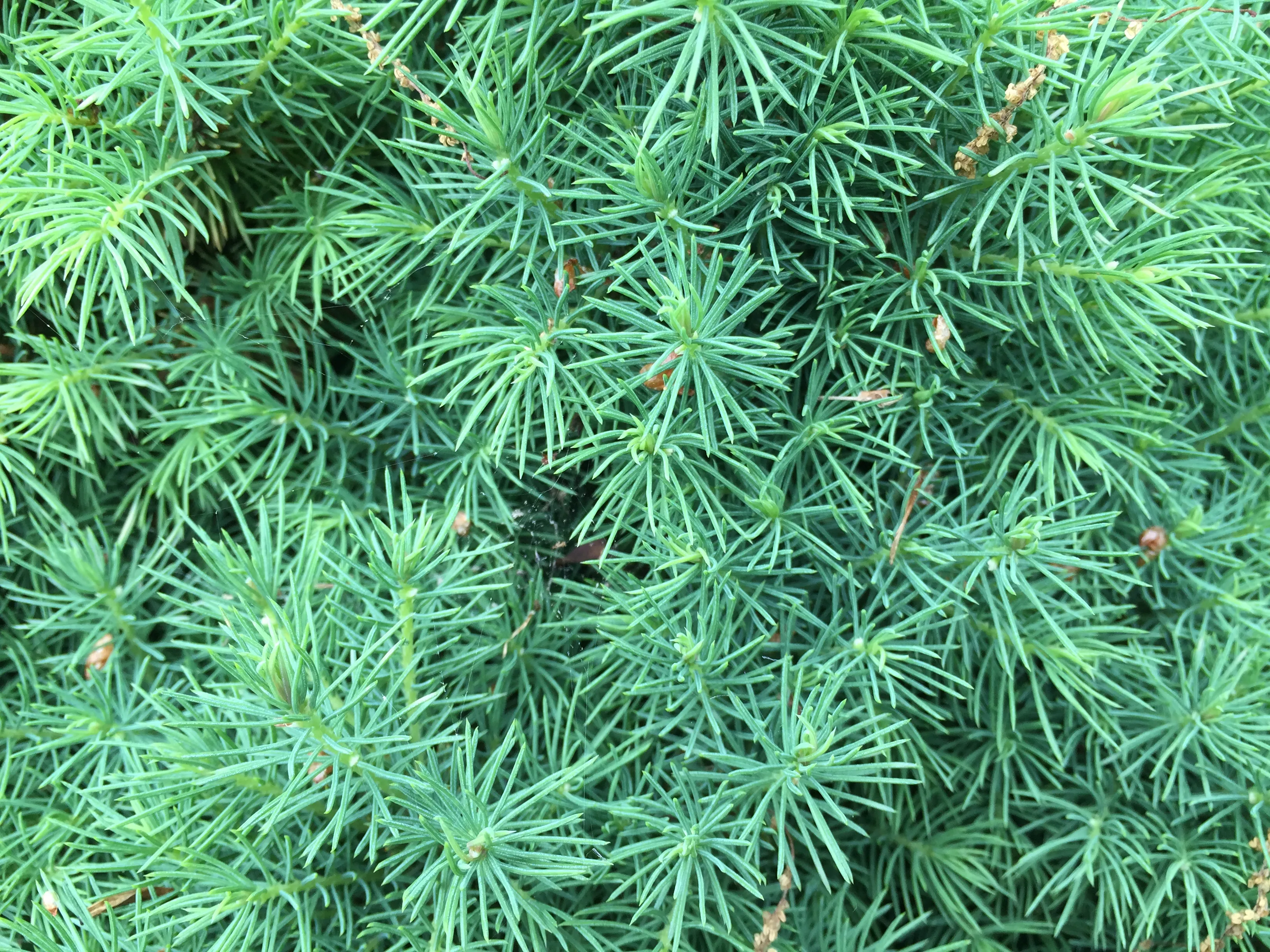How Deep Are Dwarf Alberta Spruce Roots?
Written by Ivy
Dec 13 2021

The dwarf Alberta spruce bonsai is very beautiful. The mature dwarf Alberta spruce can have a root depth of up to 20 inches, but its living habits must be considered in maintenance, so as to cultivate a strong dwarf Alberta spruce bonsai without any problems. We should let the plants see more warmth and sunshine, have more ventilation, try to use thin organic fertilizer and compound fertilizer, and water less to avoid rotten roots!
 The rotten roots of dwarf Alberta spruce bonsai show something. We can judge by this. If our dwarf alberta spruce bonsai can see light normally, can be ventilated normally, and does not use too thick fertilizer or rotten fertilizer, the leaves were green and charming, but the leaves began to turn yellow and the pine needles began to fall, At this time, dwarf Alberta spruce bonsai is likely to have rotten roots. If we carefully remove the basin soil, we will find that the roots have rotten. The root system of dwarf Alberta spruce is rotten. We should judge the cause of rotten and timely treat it. If it is delayed, the dwarf Alberta spruce bonsai may die.
The rotten roots of dwarf Alberta spruce bonsai show something. We can judge by this. If our dwarf alberta spruce bonsai can see light normally, can be ventilated normally, and does not use too thick fertilizer or rotten fertilizer, the leaves were green and charming, but the leaves began to turn yellow and the pine needles began to fall, At this time, dwarf Alberta spruce bonsai is likely to have rotten roots. If we carefully remove the basin soil, we will find that the roots have rotten. The root system of dwarf Alberta spruce is rotten. We should judge the cause of rotten and timely treat it. If it is delayed, the dwarf Alberta spruce bonsai may die.
We know that when dwarf Alberta spruce is digging, it must hurt the root system. After the root system is injured, we should apply the healing agent in time, which can not only prevent the outflow of tree sap, but also prevent the invasion of bacteria. If we don't pay attention to the root system treatment and direct cultivation, we will bury hidden dangers of safety. For a long time, it may lead to the occurrence of rotten roots; In addition, the selection of planting materials is also very important. Dwarf Alberta spruce likes loose, breathable and well drained planting materials. People can use river sand mixed garden soil and rotten leaves to meet the needs of dwarf Alberta spruce. If the soil is sticky, it will also cause poor root respiration and poor drainage, At this time, dwarf Alberta spruce will also have rotten roots and piles.
The above two points are caused by cultivation and maintenance, which is improper watering. We know that dwarf Alberta spruce is not resistant to water logging and likes a slightly dry environment. Some friends mistakenly think that dwarf Alberta spruce likes water. Frequent watering, ponding and water storage will also cause the root rot of dwarf Alberta spruce.
To disinfect the roots of dwarf Alberta spruce, we can use potassium permanganate, carbendazim and other drugs. After disinfection, we should also pay attention to that the original basin soil should not be used again. After all, there are too many harmful bacteria in it! It is suggested that after disinfection, it should be dried slightly, and the sterilized river sand mixed garden soil should be used for planting. After planting, it should not be watered temporarily, which is very beneficial to the recovery of roots.
After cultivation, it is necessary to strictly block the light, avoid excessive evaporation, so as not to increase the burden of roots, and pay attention to spraying water around the flowerpot to create greater air humidity, which are the key to serving the basin.
Read Next:
Factors That Affect Alberta spruce rootsSigns Of Dwarf Alberta Spruce Rot RootCauses of Dwarf Alberta Spruce Rot RootHow To Save Dwarf Alberta Spruce Rot Root
Factors That Affect Alberta spruce roots
- Age of the plant
- Growing conditions
- The Soil in which it grows
- The Pot in which it grows
Signs Of Dwarf Alberta Spruce Rot Root

Causes of Dwarf Alberta Spruce Rot Root
When it comes to the rotten roots of dwarf Alberta spruce bonsai, it is largely due to poor root treatment during cultivation, or improper selection of plant materials and watering problems.We know that when dwarf Alberta spruce is digging, it must hurt the root system. After the root system is injured, we should apply the healing agent in time, which can not only prevent the outflow of tree sap, but also prevent the invasion of bacteria. If we don't pay attention to the root system treatment and direct cultivation, we will bury hidden dangers of safety. For a long time, it may lead to the occurrence of rotten roots; In addition, the selection of planting materials is also very important. Dwarf Alberta spruce likes loose, breathable and well drained planting materials. People can use river sand mixed garden soil and rotten leaves to meet the needs of dwarf Alberta spruce. If the soil is sticky, it will also cause poor root respiration and poor drainage, At this time, dwarf Alberta spruce will also have rotten roots and piles.
The above two points are caused by cultivation and maintenance, which is improper watering. We know that dwarf Alberta spruce is not resistant to water logging and likes a slightly dry environment. Some friends mistakenly think that dwarf Alberta spruce likes water. Frequent watering, ponding and water storage will also cause the root rot of dwarf Alberta spruce.

How To Save Dwarf Alberta Spruce Rot Root
In case of rotten roots in dwarf Alberta spruce, we should timely remove dwarf Alberta Spruce from the flower pot and clean up the soil, which can help us find the rotten part of dwarf Alberta spruce. After finding it, we need to use scissors to cut off the rotten roots and rotten roots. After pruning, the most key link is sterilization, Otherwise, the remaining fungi will continue to infect and cannot cure the problem of rotten roots.To disinfect the roots of dwarf Alberta spruce, we can use potassium permanganate, carbendazim and other drugs. After disinfection, we should also pay attention to that the original basin soil should not be used again. After all, there are too many harmful bacteria in it! It is suggested that after disinfection, it should be dried slightly, and the sterilized river sand mixed garden soil should be used for planting. After planting, it should not be watered temporarily, which is very beneficial to the recovery of roots.
After cultivation, it is necessary to strictly block the light, avoid excessive evaporation, so as not to increase the burden of roots, and pay attention to spraying water around the flowerpot to create greater air humidity, which are the key to serving the basin.
Read Next:
- How Do You Get Rid of Pest And Diseases On Dwarf Alberta Spruce
- Dwarf Alberta Spruce Overwatering: Causes And Solution
- What Is The Best fertilizer For Dwarf Alberta Spruce
- How To Grow Dwarf Alberta Spruce In Pots?
- Why Is My Dwarf Alberta Spruce Turning Brown?
- How Big Does a Dwarf Alberta Spruce Conica Get?
- What Is My Dwarf Alberta Spruce Growth Rate
- How To Trim Dwarf Alberta Spruce
- Dwarf Alberta Spruce (Picea Glauca Conica) Profile
Latest Updated
- Benefits of Bugleweed - 7 Science-backed Health Benefits
- Bugleweed Dangers & Side Effects - Is It Poisonous?
- How to Plant Evergreen Trees - What You Should Know
- When to Plant Evergreens - Grow Guide for Evergreen Trees
- 12 Wonderful Evergreen Shrubs for Your Garden
- 12 Popular Evergreen Plants with Pictures for Beginners
- When And How To Prune A Lilac Bush Like a Pro
- How to Grow & Care for Lilac Vine (Hardenbergia Violacea)
- Japanese Lilac Tree (Syringa Reticulata) Care & Propagation Guide
- Shumard Oak Pros and Cons - What to Know
Popular Articles
- Winter maintenance of Antirrhinum Majus
- How to Grow Terminalia Mantaly Tree
- How to Grow and Care for Crossostephium Chinense
- How to grow Antirrhinum Majus in spring
- Peristeria Elata (Dove Orchid) Profile: Info & Care Guide
- Underwatered Snake Plant (Sansevieria Trifasciata) - Signs And How To Fix
- How to Care for Brazilian Jasmine Plant (Mandevilla Sanderi)
- How to Grow & Care for Graptopetalum Purple Delight in Summer
- Rosa Chinensis (China Rose): Plant Growing & Care Tips
- How to Care for Baby Sun Rose (Aptenia Cordifolia)